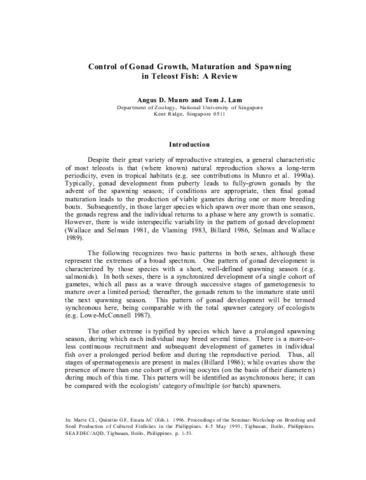Effect of juvenile hormone and serotonin (5-HT) on mixis induction of the rotifer Brachionus plicatilis Muller
| dc.contributor.author | Gallardo, Wenresti G. | |
| dc.contributor.author | Hagiwara, Atsushi | |
| dc.contributor.author | Snell, Terry W. | |
| dc.date.accessioned | 2014-01-07T09:52:13Z | |
| dc.date.available | 2014-01-07T09:52:13Z | |
| dc.date.issued | 2000 | |
| dc.identifier.citation | Gallardo, W. G., Hagiwara, A., & Snell, T. W. (2000). Effect of juvenile hormone and serotonin (5-HT) on mixis induction of the rotifer Brachionus plicatilis Muller. Journal of Experimental Marine Biology and Ecology, 252(1), 97-107. | en |
| dc.identifier.issn | 0022-0981 | |
| dc.identifier.uri | http://hdl.handle.net/10862/1871 | |
| dc.description.abstract | Juvenile hormone (JH) and serotonin (5-HT) were previously shown to enhance mictic (sexual) female production of the rotifer Brachionus plicatilis in batch cultures. To explore the basis of these effects, experiments were conducted on isolated individuals. JH treatment of maternal rotifers with 5 and 50 µg ml-1 (18.8 and 187.7 µM) resulted in significantly higher (P < 0.05) mictic female production in the second (F2) and third (F3) generations. JH treatment was effective even at a lower food concentration of 7 × 105 cells ml | en |
| dc.description.sponsorship | This study was supported by Grant-in-Aid for Scientific Research from the Ministry of Education, Science and Culture of Japan (No. 10660187) and by a grant from the Ministry of Agriculture, Forestry, and Fisheries of Japan (ED-99-II-3-2). | en |
| dc.language.iso | en | en |
| dc.publisher | Elsevier | en |
| dc.subject | Brachionus plicatilis | en |
| dc.subject | Rotifera | en |
| dc.subject | Mictic female | en |
| dc.subject | juvenile hormones | en |
| dc.subject | 5-Hydroxytryptamine | en |
| dc.subject | Free ammonia | en |
| dc.subject | Food level | en |
| dc.title | Effect of juvenile hormone and serotonin (5-HT) on mixis induction of the rotifer Brachionus plicatilis Muller | en |
| dc.type | Article | en |
| dc.identifier.doi | 10.1016/S0022-0981(00)00240-9 | |
| dc.citation.volume | 252 | |
| dc.citation.issue | 1 | |
| dc.citation.spage | 97 | |
| dc.citation.epage | 107 | |
| dc.citation.journalTitle | Journal of Experimental Marine Biology and Ecology | en |
| seafdecaqd.library.callnumber | VF SJ 0682 | |
| seafdecaqd.databank.controlnumber | 2000-23 | |
| dc.subject.asfa | ammonia | en |
| dc.subject.asfa | food availability | en |
| dc.subject.asfa | hormones | en |
| dc.subject.asfa | juveniles | en |
| dc.subject.asfa | life cycle | en |
| dc.subject.asfa | reproduction | en |
| dc.subject.asfa | sexual reproduction | en |
| dc.subject.asfa | asexual reproduction | en |
Files in this item
| Files | Size | Format | View |
|---|---|---|---|
|
There are no files associated with this item. |
|||
This item appears in the following Collection(s)
-
Journal Articles [1247]
These papers were contributed by Department staff to various national and international journals.




